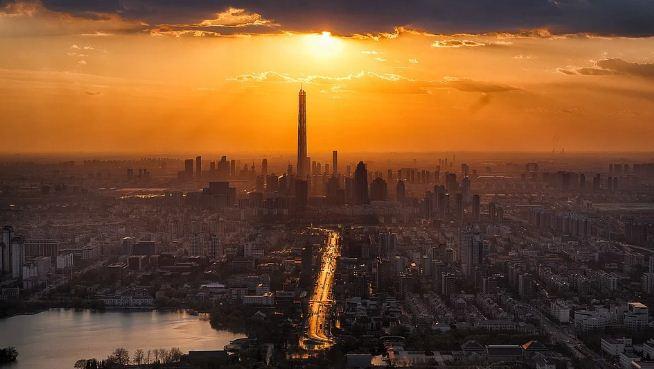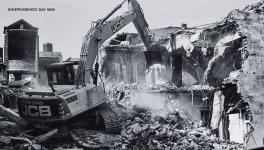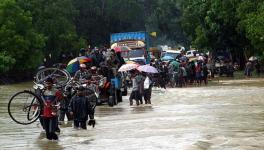World Cities Day: Need to Reclaim Spaces for Better Living

Image Courtesy: Sambad English
The annual World Cities Day (WCD), which will be observed on October 31, Sunday, aims to promote the global community’s interest in urbanisation and meeting its opportunities and addressing its challenges and contributing to sustainable urban development. The 2014 United Nations initiative, with the general theme ‘Better City, Better Life’, has selected the sub-theme ‘Adapting Cities for Climate Resilience’ for 2021.
Better cities and living, the underlying theme of the initiative, is becoming increasingly difficult in India with the dependence of urbanisation on high capital-intensive technologies and the exclusion of people.
Two fundamental issues must be addressed to ensure better cities and living across the globe and in India. First, the impact of climate change on the lives and livelihoods and infrastructure in the cities. Apart from mitigation strategies, the focus should be on an adaptive plan of action at the city level.
Second is the process of urbanisation, which is inherently exclusive and has created huge inequalities. In fact, both the impact of climate change and urbanisation are interrelated. With inclusive urbanisation, the vulnerable communities in the cities, the informal workers, women, the disabled and the elderly have a better chance for adaptive strategies against the impact of natural disasters, which are occurring more frequently.
Currently, 55 % of the world’s population stays in cities and the percentage is expected to rise to 65% by 2050. The global north and south have stark differences in the way their cities are being built and even to qualify for ‘better living’. In the global south, particularly India, getting the bare minimum of amenities qualifies for ‘better living’.
Let us look at how the Indian cities are placed in providing the bare minimum to their people. India has around 5,000 urban centres and 4,000 non-statutory towns. Apart from the urban agglomerates and tier 1 and 2 cities, most urban centres cannot even address some of the basic issues. Solid waste management, water supply, decent housing and work and public transport are direly needed essentials.
According to the World Bank, 35.2% of India’s urban population stays in the slums, which lack even the bare minimum facilities. According to the Ministry of Housing and Urban Affairs, 147,613 tonnes of municipal solid waste is generated per day in India and nearly 60% goes untreated. More than 50% of Indians don’t have access to safe drinking water and nearly 200,000 people die every year due to it.
Another study revealed that 50 million people in 15 cities have no access to safe, affordable water. Water still remains one of the most important demands of the poor for a better life in Indian cities.
Problem with urban planning
One of the major problems of urbanisation in India is the way cities are planned. Instead of planning being done by the cities themselves, they are planned by parastatals relying on multinational consultants. These parastatals, like the Delhi Development Authority and Mumbai Metropolitan Region, are not answerable to the people and rather serve some class interests.
The urban planning process further accentuates the inequity in the cities with the poor and marginalised hardly having any say in the city development process. According to the UN, “Observing the World Cities Day calls for inspiring effective climate action at the local level by sharing knowledge on effective urban systems resilience solutions; and contribute to the implementation of the new urban agenda, Sendai Framework for DRR (disaster risk reduction), Paris Agreement and localising of SDGs (sustainable development goals).”
What is important from the city perspective is local action at the behest of the cities, its representatives and the people. However, the process of urban governance and overall urbanisation discards, rather alienates, the people from participating in the planning process.
Two things must be done to ensure minimum loss to lives and livelihoods. First, empower the local bodies and the people, give them the mandate to govern, provide them with finances, ensure that disaster management plans are prepared in all the towns with people’s participation and make them a part of the city’s development plans. We must also ensure that these plans are ratified, and revisit the building typologies, focus less on capital-intensive technologies, and work for “living and building with nature”, as advocated by the late Scottish architect and writer Ian McHarg.
Second, the government must create a decent framework for working in the cities, like Seoul’s model of a decent work city, create labour hostels and rental housing and ensure that the informal sector in the city is recognised.
Some better interventions
There are two examples that I would like to share: climate-related action plans and inclusive governance. The first example is Shimla, where I served as the deputy mayor for five years. The administration conducted a study on the natural water springs contaminated due to the habitation in the catchment areas. Around 25 such springs were rejuvenated and the water was made potable. Even when the main supply line was disrupted due to high turbidity or power failure, the springs were a 24X7 source of water free of cost.
The second example is Leh, where I was part of the team responsible for writing the vision document for the town. In Leh, the sanitation workers worked in very adverse conditions. With the support of the municipal committee of Leh, Bremen Overseas Research Development Association) and NGO LEDeG, a plan to improve the working conditions of the sanitation workers while reducing the health hazards faced by them was laid out.
Leh probably became the first town to start a ‘free wash’ facility for its sanitation workers. The wash facility is provided in Skampari, a location near the municipal council office and workers housing settlement, where it is easily accessible and used by all sanitation workers.
The workers, after finishing their sanitation work, have free access to this facility. It includes separate toilet blocks for men and women, bathing facility/change room with the provision of solar-heated hot water during winters too, a recreation room with seating area and a television, a laundry area with automatic washing machines and driers to ensure that the clothes are ready to use, drinking water units.
The entire building is insulated to conserve heat with airlock entries to regulate temperature, solar passive walls to ensure minimum heat loss during winter and a central heating system with radiators to ensure that 18 degrees is maintained.
A better living will only be ensured when people reclaim their space in the urban world. Therefore, the 2021 WCD theme should be ‘Cities are People’.
The writer is the former deputy mayor of Shimla, Himachal Pradesh. The views are personal.
Get the latest reports & analysis with people's perspective on Protests, movements & deep analytical videos, discussions of the current affairs in your Telegram app. Subscribe to NewsClick's Telegram channel & get Real-Time updates on stories, as they get published on our website.
























